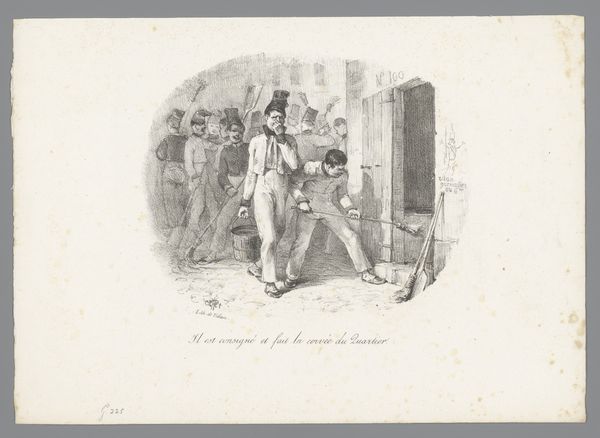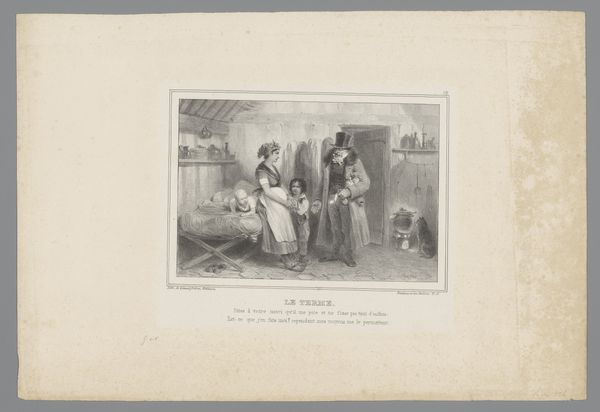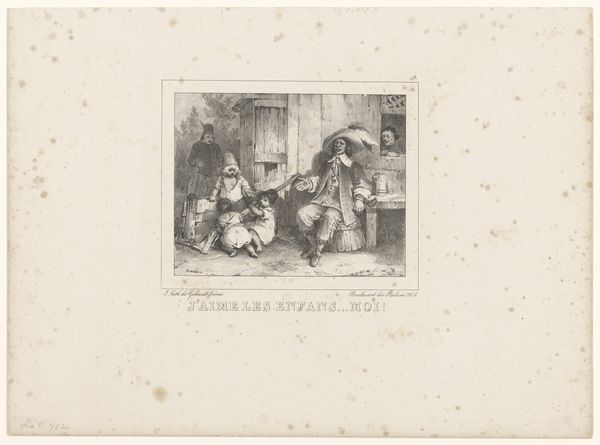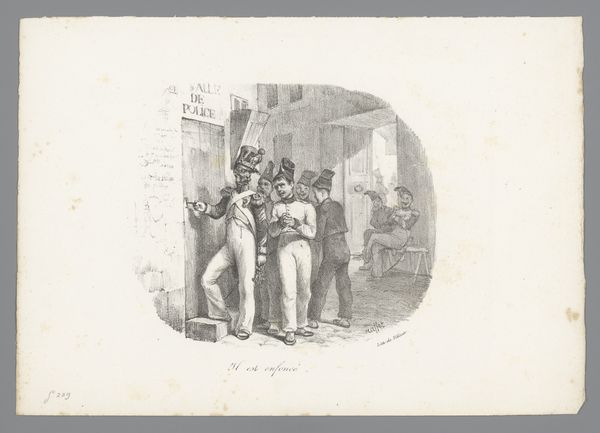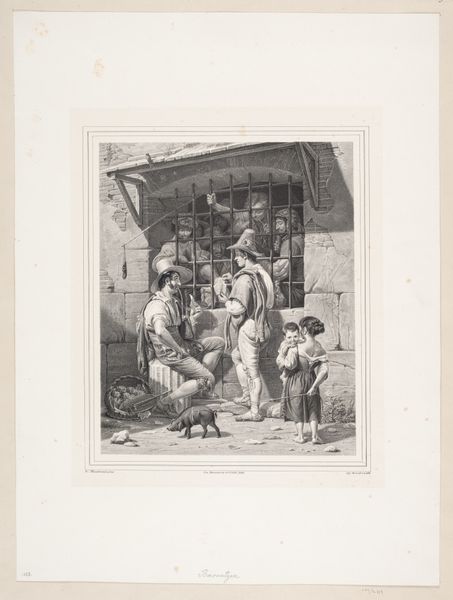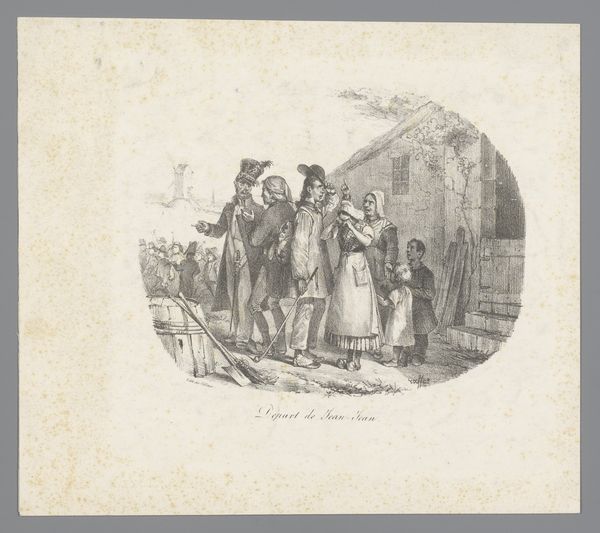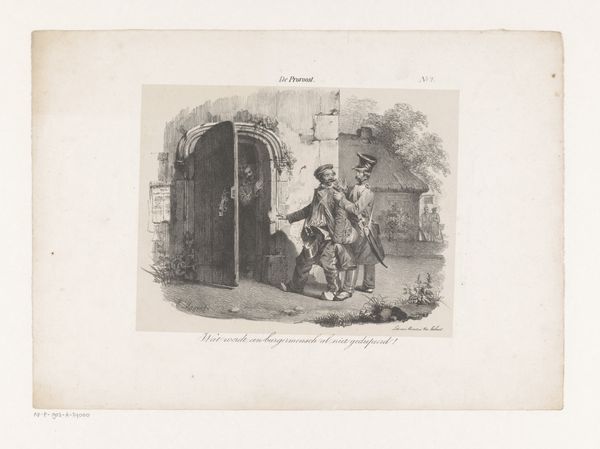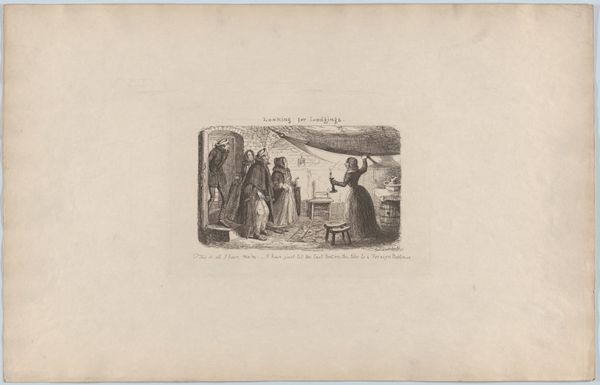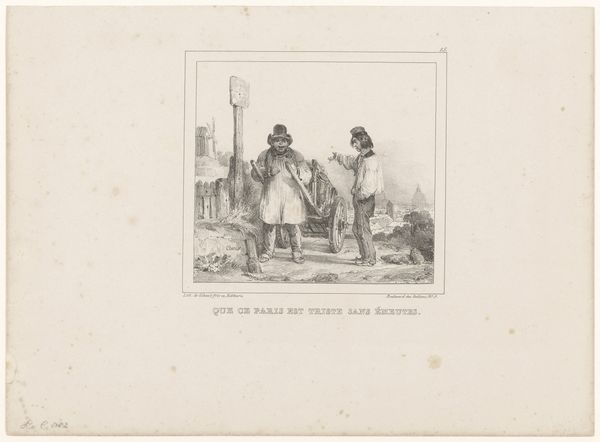
Jean-Jean staat met een vrouw en kind voor een banketbakkerij 1825 - 1829
0:00
0:00
augusteraffet
Rijksmuseum
drawing, print, etching, paper, ink
#
portrait
#
drawing
# print
#
etching
#
paper
#
ink
#
child
#
romanticism
#
genre-painting
Dimensions: height 217 mm, width 301 mm
Copyright: Rijks Museum: Open Domain
Editor: This is "Jean-Jean staat met een vrouw en kind voor een banketbakkerij" by Auguste Raffet, made between 1825 and 1829. It's an etching. It looks like a simple family scene, but something about the body language feels…charged. What do you see in this piece? Curator: I see a loaded tableau, masked as a charming genre scene. This image offers a lens into 19th-century social structures, specifically anxieties around class, gender, and race in post-revolutionary France. Look closely: What does it mean that the Black child is positioned so centrally, yet clearly exists outside the white couple's circle of intimacy and belonging? How might we read that? Editor: I hadn't thought of it that way, I just thought she was, maybe, the couple's child or being cared for by them. But, now that you point it out, she *is* slightly set apart. Is it meant to show how people of color were viewed at the time? Curator: Precisely. Raffet isn't merely depicting a family at a bakery. The image subtly underscores existing power dynamics. Notice the title "Il offre de la galette et declare sa passion," meaning "He offers a cake and declares his passion." This declaration, then, is visually framed by complex issues of race and class, subtly exposing how affection and courtship were shaped by societal norms and inequalities. It invites us to consider how even intimate gestures are tinged by larger socio-political realities. Editor: That makes me see the image in a totally different light. It's like a sweet image that is also critiquing something at the same time. Curator: Indeed! Romanticism wasn't just pretty landscapes and dramatic portraits. It could also hold space for subtle critiques of the societal frameworks that shaped people's lives, inviting viewers to question the status quo through everyday scenes. This piece is a perfect example. Editor: I’ll definitely remember to look for these hidden critiques in other Romantic works! Curator: Absolutely. Context is key to unlock hidden dialogues and untold stories.
Comments
No comments
Be the first to comment and join the conversation on the ultimate creative platform.
